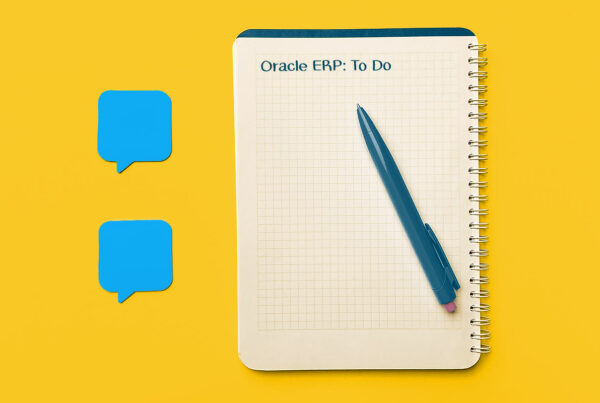Bottlenecks — those obstacles and setbacks that slow or delay a process — are often talked about in relation to manufacturing and logistics. They can, however, occur in any process where information, people, time, and communication are involved. The outcomes are nearly always the same. Bottlenecks result in lost revenue, poor quality, stress on resources, delayed launches, and other negative impacts on your business. In this blog, we’ll discuss how to identify bottlenecks in business processes and how to fix them.
2 Types of Business Process Bottlenecks
Most bottlenecks fall into one of two basic categories:
- Short-Term: These are the more obvious problems caused by temporary circumstances. For example, if two employees call in sick and no one else is available to cover their work, a backlog will build until their return.
- Long-Term: Long-term bottlenecks are more insidious in nature. They are chronic issues that become accepted as part of the process over time, instead of being identified as an ongoing problem needing a solution.
Both types of bottlenecks are the result of capacity or efficiency problems. Capacity issues stem from tools, resources, or staff being unavailable. Efficiency issues can also be related to tools and staff, technical difficulties, system deficiencies, or software not working well enough or fast enough to keep up.
Why Bottlenecks Matter
Imagine your bookkeeper is retiring. You’ve recently hired a replacement that they will train to take over the position once they’ve left the company.
Now, let’s say your current bookkeeper manually enters data into your system. You know that’s an inefficient use of resources likely to result in bottlenecks and mistakes, but you’re not the one training the new employee. They’ll be trained according to the way it’s always been done — not taught the most beneficial process for the workflow.
Bottlenecks matter because:
- Processes are slowed or halted completely
- Resources are used inefficiently
- There is an increased risk of mistakes
- Staff frustrations can result in higher turnover rates
- Customer satisfaction drops if product quality drops or shipping is delayed
- It’s expensive to deal with bottlenecks and remedy issues after the fact
How to Identify Bottlenecks in Your Business Processes
Some bottlenecks are easy to identify by watching for warning signs. However, to anticipate them before they occur, you’ll need to take a more methodical approach.
Bottleneck Warning Signs
- Long wait times / slow processing (reports, approvals, product components, etc.)
- Work pileup / inefficient work distribution
- Continuous errors or defects
- Wasted materials or wasted time due to inefficiencies
After documenting the low-hanging fruit, we recommend taking a more methodical approach to uncover the deeply rooted bottlenecks in your business processes.
A Proactive Approach to Finding Bottlenecks
While it’s helpful to find existing bottlenecks and fix them, it’s even better to identify potential issues before they become a problem.
Process mapping is an effective tool for understanding how processes are intended to play out and predicting where bottlenecks might occur. To start, define each of your operations, being mindful of scope. Next, identify the various stakeholders, participants, and gatekeepers. Finally, map out the phases of each process from beginning through completion.

As you make your process map, be sure to keep in mind the following questions:
- How long should the process take?
- What resources are used?
- What deliverables are produced?
- How do outcomes get measured?
- How are employees or teams held accountable?
- Are there any conditional rules to consider? (For example, all purchases over $15K require executive approval.)
The goal is to learn which parts of the process are too slow, where protocols are missing, which mistakes happen the most often, and other issues that may contribute to bottlenecks.
Fixing Your Bottlenecks
Now that you’ve worked to find your business bottlenecks, it’s time to remedy them.
First, talk to your humans. The people working the processes know the most about them, including which workarounds they’ve come up with to circumvent a problem in operations. Ask questions to learn what works well and what they think could be improved. Also, talk to your suppliers, staff, and customers to find their stress points so you can develop holistic solutions that account for all stakeholders.
Next, develop possible solutions. With stakeholder input, begin ideating potential solutions for the pain points and bottlenecks you’ve identified thus far. It can be helpful to start by generating many ideas, then whittling the list to the solutions with the highest success potential.
Identify opportunities for automation. As you continue to look for solutions, keep an eye out for manual processes that could (or should) be automated. Ask yourself — what can we systemize to enhance efficiency, increase accuracy, improve speed, or add capacity? Are there any pre-bottleneck steps we can take to reduce the backlog before it happens? (Shameless plug: we specialize in custom software solutions, including business process automation. If you’re looking for a partner, we’re here to help.)
Test and evaluate. Your earlier mapping should provide a good idea of how much time and cost is spent on each process phase. This gives a good base and objective starting point for measuring the success of a solution. It’s important to note that time and money saved are not the only metrics you should be tracking — you should also measure whether your solution(s) result in reduced human errors, improved employee satisfaction, better allocation of resources, less waste, and other statistics critical to your business.
Picking the Right Solution to Reduce Bottlenecks in Your Business
After testing and evaluating solutions to your bottlenecks, there’s one more step to take — the cost/benefit analysis. For any solution, the costs will depend on your starting point. If you already have an ERP software system, you’re one step ahead of the game. A partner like Traust can help you determine ways to integrate and automate your ERP with your other existing systems and recommend custom, individualized development tools to improve your most significant pain points.
To learn more about dashboard metrics, workflow automation, and using real-time data to work more proactively, download our free digital operations guide.





